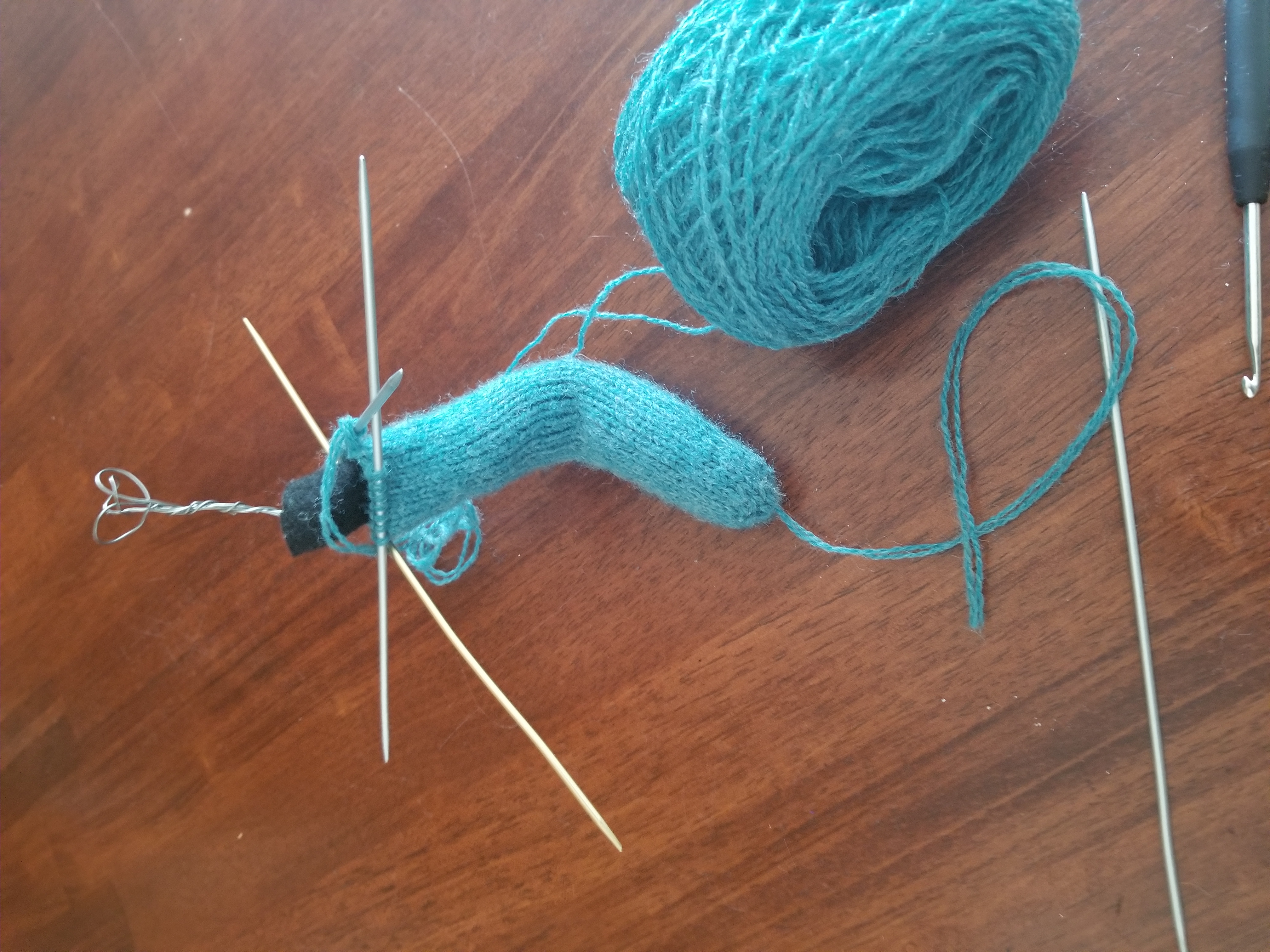Shanel Wu
They/them. PhD student: smart textiles, weaving, computational craft, hardware hacking.
Pose-able Knitting
by S

Turns out, saving all those wires from grocery store twist ties and coffee bag closures paid off. Each piece of wire was about 6in/15cm long, so multiple strands were twisted together to form a longer piece that could run the length of the final knitted tube (about 10in/25cm). Each end of the wire skeleton was twisted into a sort of wire “mushroom” so there would not be any ends poking out of the knit.
I knit the tube on double-pointed needles, starting with a tightened circular cast on, similar to a magic circle in crochet and this cast-on described here. After casting on, I increased to about 25? 27? stitches. Knitting in a straight tube for a while, once I had some length built up, I was able to start stuffing the tube as shown in the photograph. Turns out, it’s better to insert the wire first, then stuffing (thread scraps) around the skeleton.
Unfortunately, I don’t have pictures of the finished item, nor pictures of the complete assemblage of which it’s only a unit. This bend-able knitted tube was posed as a zig-zag, then strung up into a DIY baby mobile.